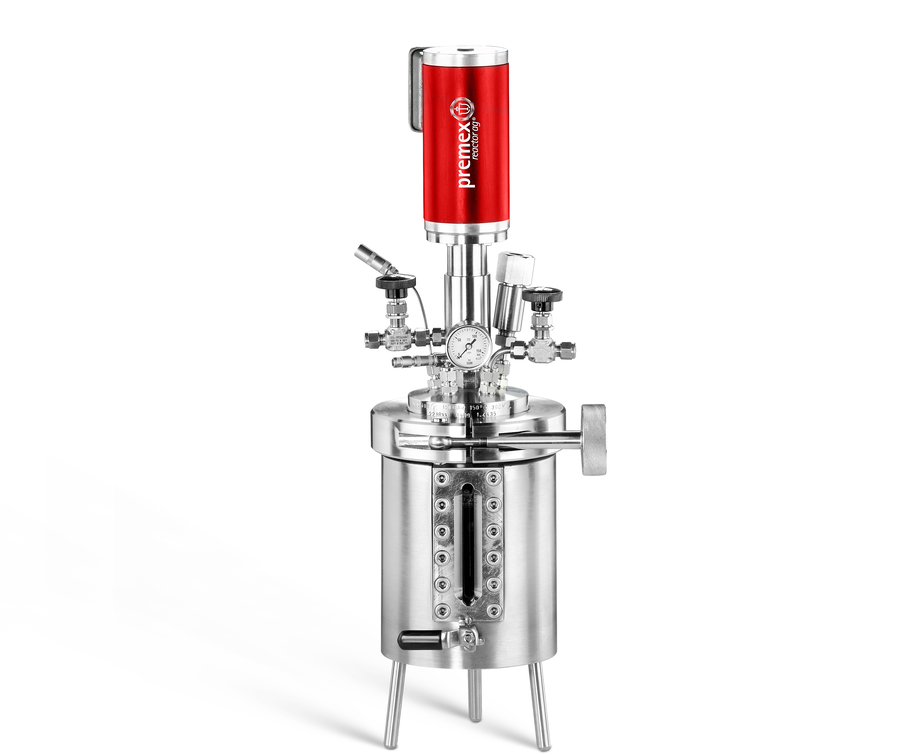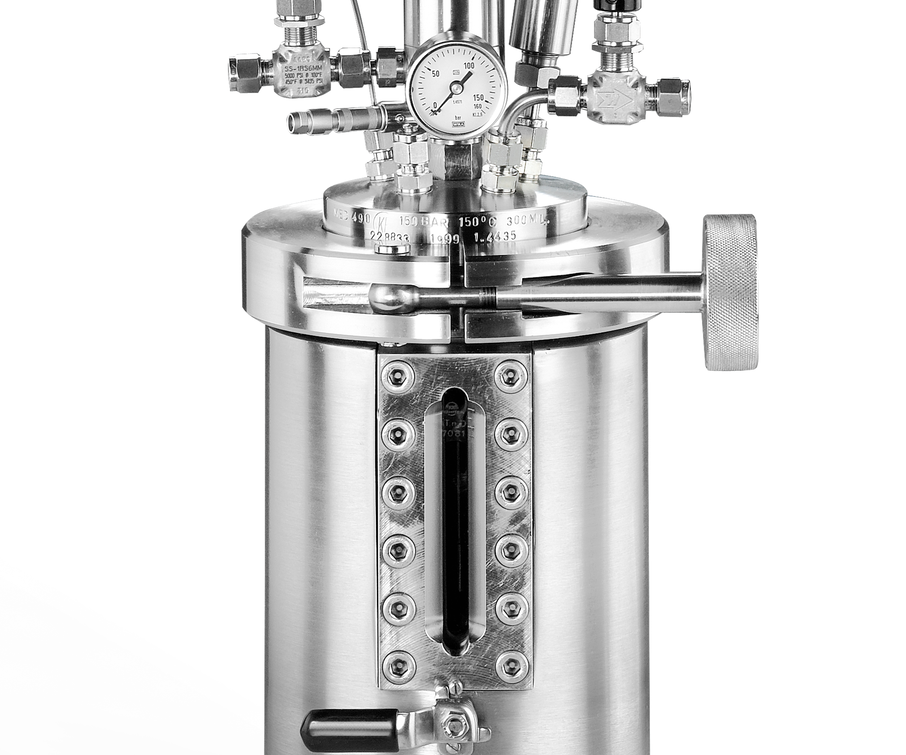
sonar
High pressure reactor sonar
Premex presents a high-pressure reactor with longitudinal viewing window up to an incredible 150 bar. You can now also follow the course of the reaction visually.
Specifications
- Nominal volume ml: 300
- Working pressure bar: 150 bar
- Working temperature °C: 200
- Material WNr. 1.4435
- Viewing glass over the entire cylinder length, clear width 12 mm, made of dual glass
- Jaw closure (quick release)
- Autoclave seal via EPDM O-ring located in autoclave vessel
- Magnetic stirrer drive with a torque of 50 Ncm, connection M18 x 1 mm
- Lenze three-phase motor 40 Watt, 3 x 230/400 V, 50 Hz
- Output speed with ball bearing 0-1'300 rpm, with plain bearing 0-1'200 rpm.
- Fittings directly on the lean mixer drive: valve for gas supply and pressure gauge 0-160 bar, ø 40 mm
- Immersion tube with temperature sensor 2 x Pt100, 4-wire
- Sapphire window for vessel illumination
- Hole for pressure relief with Whitey valve
- Nupro spring pressure safety valve
- Bore with plug
- Stirring element: gas flushing stirrer ø 38 x 128 mm or other stirring elements
- Bottom outlet via Withey ball valve. The conical bottom has an inclination of 16°. The installation of a frit is possible.
Heating and construction
- Double jacket heater as welded construction, insulated on the outside and covered with CN jacket. Inner baffles serve to guide the oil. On the outer jacket of the autoclave vessel there are two nozzles for the flow and return of the heat transfer oil. Alternatively, premex offers the reactor with electric heating.
- Three adjusting legs on the base plate of the high-pressure reactor give the outlet valve sufficient ground clearance to operate it.
- The vessel is internally ground grain 400 and mechanically repolished.
- Dimensions: Vessel inside ø 60 x 145 mm, outside ø 120, total height including magnetic stirrer approx. 600 mm.


